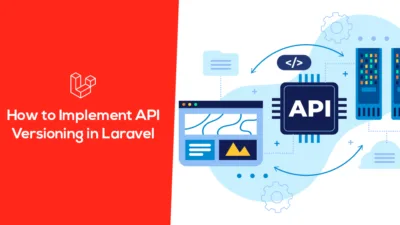Hello Laravel Friends,
In today’s blog, I will share some best practices to secure your Laravel web application.
Laravel is a well-known PHP framework with elegant syntax, huge feature lists, and a great community. But almost no web application is immune to security intrusions, and you need to protect your Laravel web application from possible vulnerabilities through the security best practices. In this blog, we will cross-check all major Laravel security best practices to help you build secure web applications.
Laravel Security Best Practices to Protect Web Application
Keep Laravel Updated:
It is one of the simplest yet most effective measures in running a secure application. Laravel releases periodic updates shaking up the documented vulnerabilities. Make it a habit to keep checking if updates are here and apply them sooner.
$ composer update
Implement Strong Authentication:
Authentication serves as the bedrock of every web application security. You should consider using built-in authentication of Laravel to manage your users. You should further secure your web application via Multi-Factor Authentication (MFA).
$ php artisan make:auth
Sanitize User Input:
Always validate and sanitize user input to avoid SQL injection, Cross-Site scripting (XSS), and other security risks. Laravel will be helpful when you’re trying to avoid these risks, as it offers validation rules and Eloquent’s ORM.
$request->validate([ 'email' => 'required|email', 'password' => 'required|min:8', ]);
Protection Against Cross-Site Request Forgery (CSRF) Attacks:
By default, CSRF attacks are protected in the Laravel framework. For this purpose, you must ensure to embed the @csrf blade directive inside the form, so that it generates CSRF tokens automatically.
<form method="POST" action="/example"> @csrf <!-- Other form fields --> </form>
Use Dependency Injection and Dependency Injection Containers:
Take advantage of using dependency injection and the service container designed within Laravel to manage the purpose that your application has. This prevents code injection attacks and gives a healthy and secure-looking code.
public function __construct(UserRepository $userRepository)
{
$this->userRepository = $userRepository;
}Secure Your Database:
Make sure your database has strong credentials and, if possible, think of using the Laravel Query Builder or Eloquent ORM for database operations. Avoid using raw SQL queries whenever possible.
$users = DB::table('users')->where('status', 1)->get();Implement Rate Limiting and Throttling:
Protect your APIs and endpoints from abuse by implementing rate limiting and throttling. Laravel’s built-in rate limiting middleware makes this process straightforward.
Route::middleware('throttle:60,1')->group(function () {
// Your protected routes here
});Validate and Sanitize File Uploads:
If your application allows file uploads, validate and sanitize user-uploaded files to prevent malicious uploads or executable files from being added to your server.
$request->validate([
'file' => 'required|file|mimes:jpg,png,pdf|max:2048',
]);
$path = $request->file('file')->store('uploads');Use Content Security Policy (CSP) Headers:
Inject CSP headers into your application to protect against cross-site scripting (XSS.) Laravel has a method which enables you to set these headers within middleware.
// Add CSP headers in your middleware
public function handle($request, Closure $next)
{
$response = $next($request);
$response->headers->set('Content-Security-Policy', "default-src 'self'");
return $response;
}Regularly Monitor and Audit Your Application:
Create logging, monitoring, and audit features to track and respond to security events. Laravel offers extensive logging capabilities that can be used to capture and analyze security-related events.
Conclusion:
Protecting your Laravel web application from security threats is an ongoing process. By following these Laravel security best practices, you can significantly reduce the risk of vulnerabilities and ensure the safety of your application and its users. Remember that security is a shared responsibility, so stay informed about the latest security developments and continually improve your application’s defenses.
Hire a Laravel Developer to help you secure your store from vulnerabilities.








